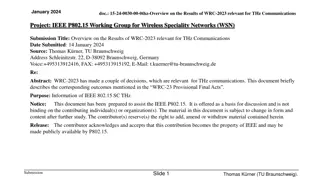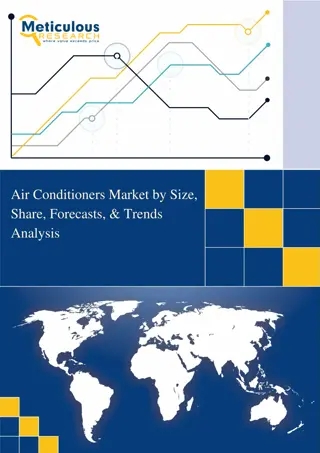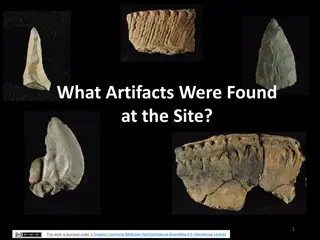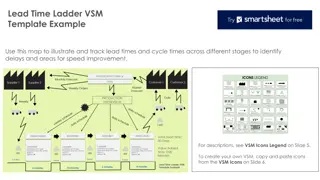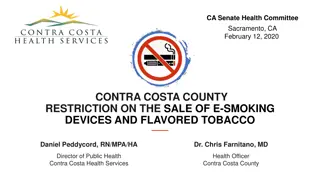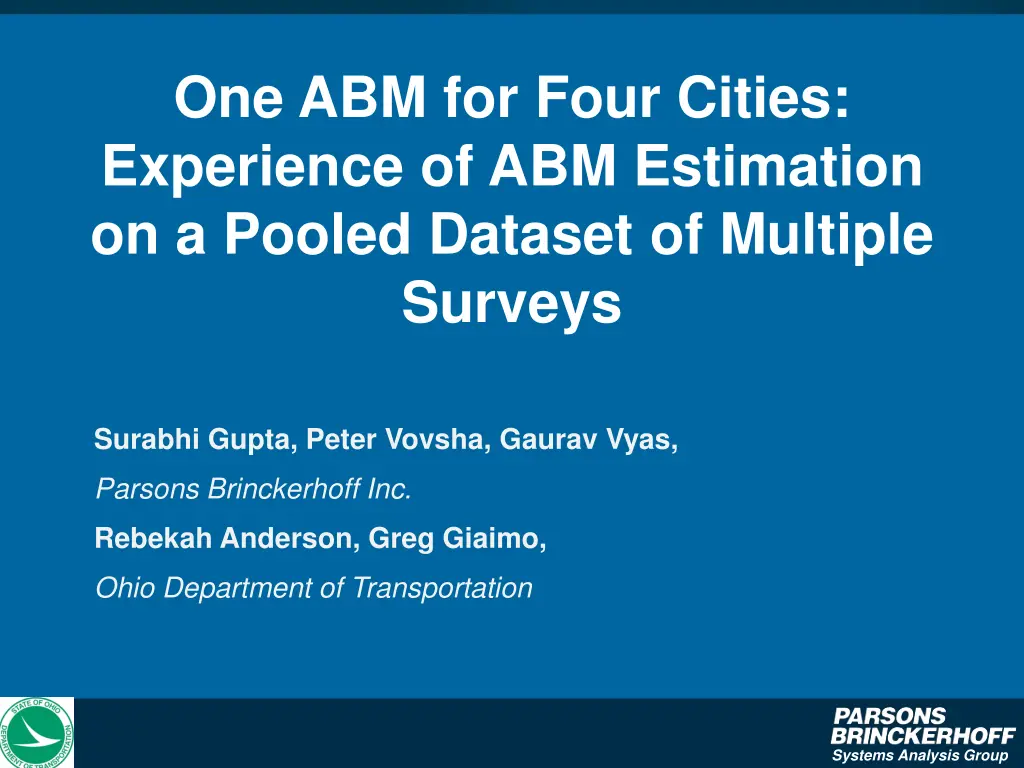
Advanced Estimation Techniques in Region-Specific Data Processing
Explore the experience of using agent-based modeling (ABM) on pooled datasets from multiple surveys to estimate data for four cities. Learn about handling missing data, developing generic ABM models, and the advantages of using a richer dataset. Discover the process of consolidating survey data and the general approach for model estimation using pooled datasets.
Download Presentation

Please find below an Image/Link to download the presentation.
The content on the website is provided AS IS for your information and personal use only. It may not be sold, licensed, or shared on other websites without obtaining consent from the author. If you encounter any issues during the download, it is possible that the publisher has removed the file from their server.
You are allowed to download the files provided on this website for personal or commercial use, subject to the condition that they are used lawfully. All files are the property of their respective owners.
The content on the website is provided AS IS for your information and personal use only. It may not be sold, licensed, or shared on other websites without obtaining consent from the author.
E N D
Presentation Transcript
One ABM for Four Cities: Experience of ABM Estimation on a Pooled Dataset of Multiple Surveys Surabhi Gupta, Peter Vovsha, Gaurav Vyas, Parsons Brinckerhoff Inc. Rebekah Anderson, Greg Giaimo, Ohio Department of Transportation Systems Analysis Group
4 Regions Characteristics Columbus Cleveland Cincinnati Dayton Population 1.66 M 2.02 M 1.99 M 0.8 M # Counties 7 5 8 ( OH, IN, KY) 3 Transit modes Express bus, Local bus Heavy Rail, BRT, Express bus, Local bus Express bus, Local bus Express bus, Local bus Toll roads No Yes No No Systems Analysis Group
4 Regional Household Travel Surveys Characteristics Columbus Cleveland Cincinnati Dayton MPO MORPC NOACA OKI MVPRC # Households 5,555 4,250 2,050 1,950 # Days 1 3 3 1 Survey year 1999 2012-13 2010 2001 Type Prompted recall (PR) GPS + partially GPS + partially PR PR PR Time of the year Fall/Spring All year All year Fall/Spring Systems Analysis Group
Motivation Develop the most possible generic ABM for all regions: Transferability as desired feature rather than post-development analysis Bigger and richer dataset for advanced ABM compared to any regional HTS on its own Systems Analysis Group
Data Processing Consolidating Survey Data: Household File Person File Trips File Vehicle File Recoding Variables: Common variable codes Unknown for missing variables in a particular region Systems Analysis Group
How to handle missing data in estimation? Missing independent variables (e.g., income, age etc) Create dummy for missing category Cannot estimate region-specific coefficients for any attribute missing for the region Systems Analysis Group
Using Pooled Dataset for Model Estimation / General Approach Dependent variable Independent variables Y X1 X2 1st Survey 2nd Survey Y X2 X3 Still possible to estimate Y=f(X1,X2,X3) 7 NYMTC, April 2, 2014 Systems Analysis Group
Using Pooled Dataset for Model Estimation / Placeholders Dependent variable Independent variables Y X1 X2 Z3 1st Survey Placeholders or approximations 2nd Survey Y Z1 X2 X3 Estimated model example: Y=a1 X1 1 + b1 Z1 (1- 1) +a2 X2 + b3 Z3 (1- 2) + a3 X3 2 Applied model: Y=a1 X1 + a2 X2 + a3 X3 8 NYMTC, April 2, 2014 Systems Analysis Group
How to handle missing data in estimation? Missing dependent variable (e.g., work arrangement model) Choice alternatives specific to region based on available data Component-wise utility function and generic coefficients Alternative 1 2 3 4 5 6 7 8 Number of jobs Single job Single job Single job Multiple jobs Multiple jobs Multiple jobs Single job Multiple jobs Work place type Fixed work place Variable work place Home Fixed work place Variable work place Home NA NA Available for Cleveland and Cincinnati Cleveland and Cincinnati Cleveland and Cincinnati Cleveland and Cincinnati Cleveland and Cincinnati Cleveland and Cincinnati Columbus and Dayton Columbus and Dayton Systems Analysis Group
Transferability Analysis Every model has a rich set of variables: Household characteristics, person characteristics, activity participation, LOS, accessibilities, time-space constraints Statistical analysis and model estimation/calibration: Generic model no region-specific coefficients or constants Partially segmented some coefficients or constants are region-specific Fully segmented all or most coefficients or constants are region-specific Systems Analysis Group
Submodels: Generic or Specific? Sub-Model/ Component Generic or Region Specific Work Arrangement Model Partially segmented Work Location Choice Model Fully segmented Schooling from Home Model School Location Choice Model Generic Fully segmented Commuting Frequency Model Generic Person Mobility Attributes Model Generic Generic Auto Ownership Model Auto Allocation Model Coordinated Daily Activity Pattern Generic Partially segmented Mandatory Activity and Tour Frequency Partially segmented Preferred Mandatory Activity Span Model Generic Escorting children to School Generic Systems Analysis Group
Submodels: Generic or Specific? Sub-Model/ Component Generic or Region Specific Joint Tour frequency, party composition and household participation Partially segmented Joint Tour destination with stop frequency and location choice Generic Frequency of Household Maintenance tasks Generic Allocation of Maintenance Tasks to Household Members Generic Person Frequency of Individual Activities Partially segmented Tour Formation Models Generic Tour Time-of-day Choice Model Generic Tour Mode Combination Model Fully segmented Systems Analysis Group
Fully- Segmented Models Work and School Location Choice Models Size of region shapes tolerance to commuting distance Relative location of population and employment Distance to Work Location (miles) 0.00 0 20 40 60 80 -1.00 -2.00 -3.00 Utility -4.00 -5.00 -6.00 -7.00 -8.00 -9.00 Columbus Cleveland Cincinnati Dayton Systems Analysis Group
Partially Segmented Models Work Arrangement Coordinated Daily Activity Pattern Mandatory Activity and Tour Frequency Joint Tour frequency, party composition and household participation Person Frequency of Individual Activities Systems Analysis Group
Work Arrangement Model Number of Jobs ( 1, 2+) Region specific constants Columbus Cleveland Cincinnati Dayton 0.0 -0.5 -1.0 Constant - Multiple Jobs Utils -1.5 -2.0 -2.5 Work Location Type (Fixed, Variable, Home) Generic Available for only 2 surveys (Cleveland and Cincinnati) Systems Analysis Group
Coordinated Daily Activity Pattern Mandatory, Non-Mandatory, Home patterns Differences between Older (Columbus, Dayton) vs. Newer (Cleveland, Cincinnati) Surveys Fall/Spring vs. All year for Mandatory frequency Prompted recall vs. GPS for Non-Mandatory vs. Home 100% Mandatory proportion in survey 75% Columbus Cleveland Cincinnati Dayton 50% 25% 0% FT Worker PT Worker Univ Stud Non-Worker Retiree Child (16-17) Child (6-15) Child(0-5) Systems Analysis Group
Mandatory Activity and Tour Frequency Tour Breaks going home between work episodes Multiple work tours More probable for Dayton smaller region size 4.0 2.962 Utility of multiple 3.0 2.0 tours 0.591 1.0 0 0.0 -1.0 -1.299 Cincinnati -2.0 Columbus Cleveland Dayton Systems Analysis Group
Joint Tour Frequency and Participation Cleveland specific constants Proportion from survey 30% 20% More maintenance, eating out and discretionary joint tours 10% 0% Lower frequency of joint tours GPS survey, All year Fully Joint Tours Columbus Cleveland Dayton Form New Tour Join Old Tour Shopping Maintenance Eating Out Visiting Discretionary 0.0 0 -1.0 -0.5 -2.0 Utility -3.0 -1 -4.0 -5.0 -1.5 Activity Purpose -6.0 Cleveland Others Cleveland Others Systems Analysis Group
Person Frequency of Individual Activities # of Eating out, visiting, and discretionary activities Region specific constants by purpose & frequency Cleveland time trends? Cincinnati data was not used due to trip purpose imputation issues 0.5 0.0 0 -0.5 -0.5 -1.0 Utils -1 -1.5 -1.5 -2.0 Cleveland Dayton -2 -2.5 Cleveland -3.0 -3.5 -4.0 1 2 3+ # Activities Activity Purpose Systems Analysis Group
Conclusions Overall most of the models generic and transferable Pooled dataset supports more advanced behavioral analysis: Recommend cooperation between MPOs Observed differences across regions partially reflect on survey technology and time trends Moving towards more generic and portable models by having a rich set of variables and more flexible specifications Destination choice and travel time-cost perceptions the most fundamental difference across regions: Residential self-choice Endogenize and equilibrate time and cost coefficients as function of regional travel conditions Systems Analysis Group

